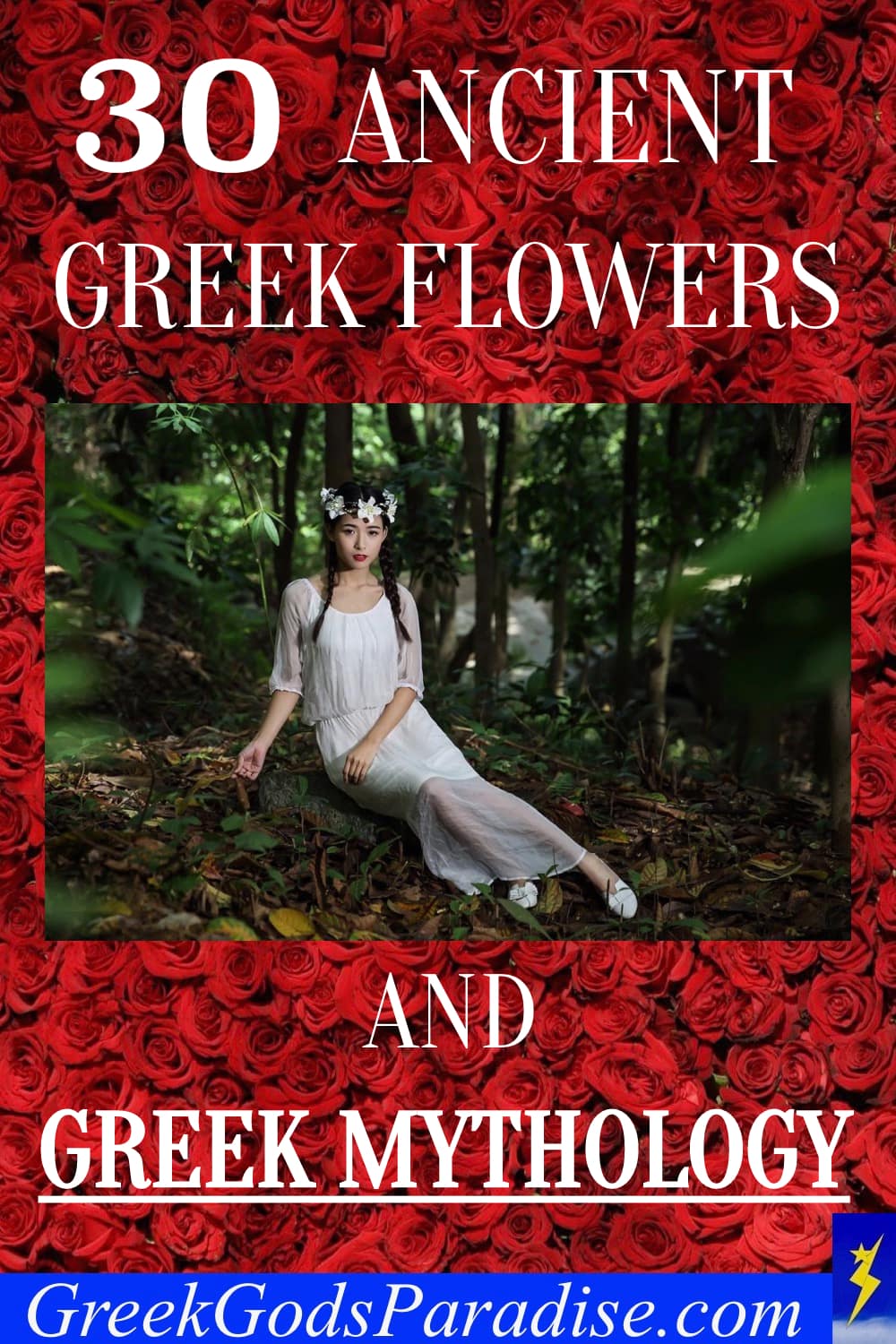Ancient Greek flowers exist today due to the extraordinary powers of Greek Gods and Goddesses.
As incredible as it may sound, ancient Greek flowers were often willed into existence by one of the Greek Gods or Goddesses.
And sometimes it was by accident!
Here you will find out how flowers were created according to Greek mythology. Because let’s face it, there aren’t any better scientific explanations.
Ancient Greek Flowers
Ancient Greeks believed in the Goddess of flowers who went by the name Chloris.
Romans called the Flower Goddess Flora.
It seems to make a lot of sense, especially considering all of the beautiful flowers in the world.
You can bet that Flora played a big part in creating many stunning flowers.
As a small token of proof, it is how the word Florist first came about.
Sadly many of these ancient Greek flowers also bloomed into existence because of tragic events. However, it wasn’t all due to tragedy in Greek mythology.
See for yourself. Let’s start with the most ancient Greek flower of them all, the red rose.
1. Rose
The rose is a universal symbol of love and beauty.
For this reason, Aphrodite, the Goddess of love, is often associated with roses.
 Even though the rose is closely associated with Aphrodite, it was Chloris, the Greek Goddess of flowers and Spring, who many believe created the first rose.
Even though the rose is closely associated with Aphrodite, it was Chloris, the Greek Goddess of flowers and Spring, who many believe created the first rose.
It is said in Greek mythology that Chloris (Roman name: Flora) made the first rose bloom from the lifeless body of a beautiful nymph she found in the forest.
To make her eternal, she transformed the beautiful nymph into a lovely rose.
2. Narcissus – Daffodils
Over 40 species of narcissus exist, which include the daffodil and poet’s narcissus.
These flowers were born from the famous Greek myth of Narcissus, who loved himself above anyone else in the world.
The tragic love story of Narcissus is in 10 Inspirational Greek Myth Love Stories.
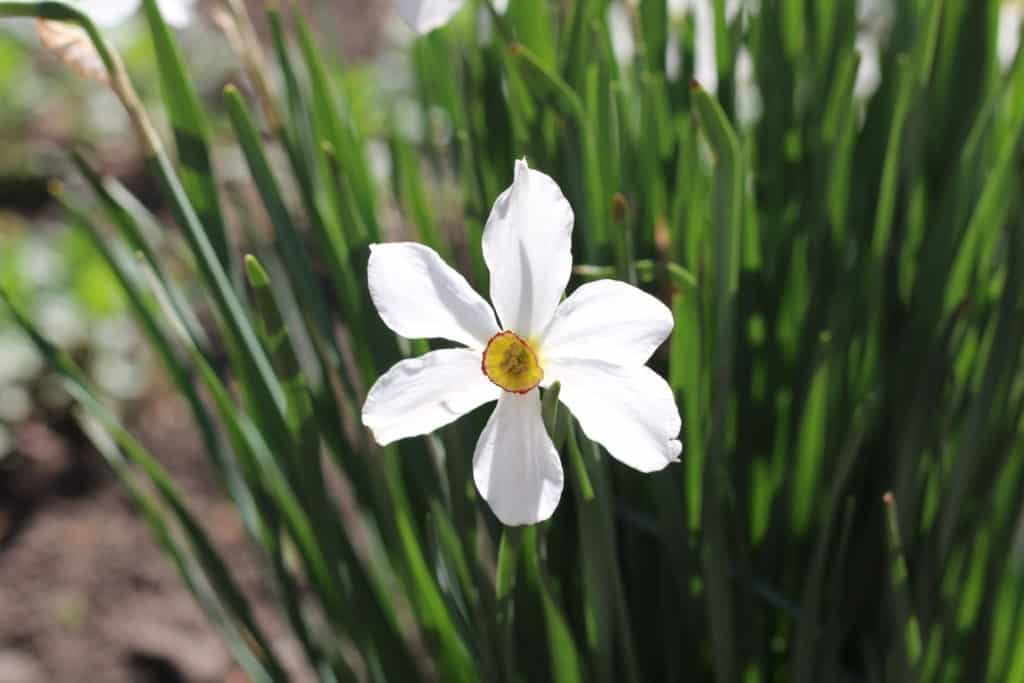
The creation of the Narcissus flower (and hence daffodils) is unexpectedly all due to the Goddess Aphrodite.
Aphrodite (Venus) punished Narcissus by placing a curse on him so that he’d fall in love with himself after continually ignoring the affections of a beautiful nymph.
As a result of the curse, Narcissus became mesmerized by continually looking at his self-reflection on the surface of a smooth pond.
His reflection became the only thing he desired to see, so it didn’t take too long for him to waste away. When he did, he ended up becoming a stunning flower.
3. Iris
The Iris flower comes from Iris, Goddess of the rainbow, who also happens to be a messenger of the Greek Gods.
Iris links heaven and earth, so it seems fitting that she should have her very own beautiful flower.
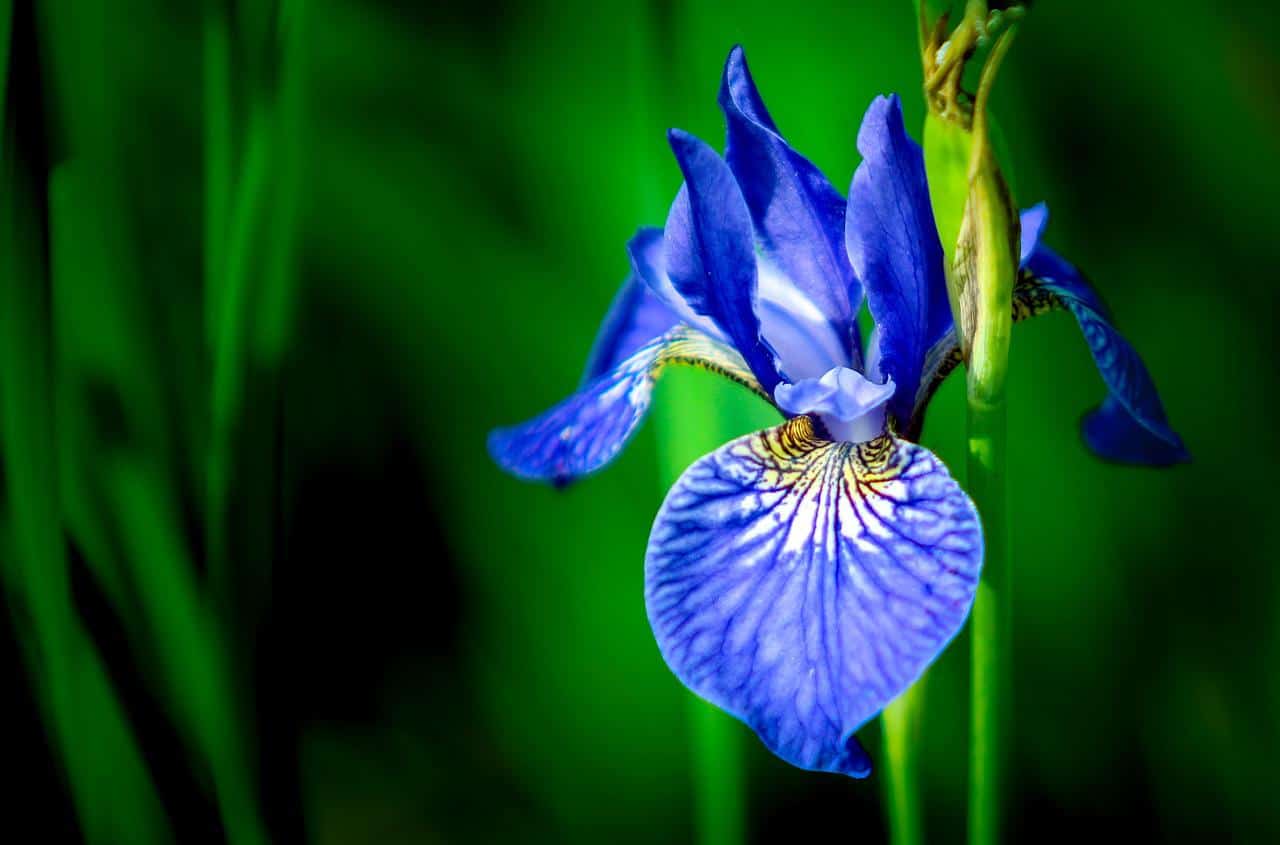
Purple and blue Iris flowers are stunning. Blooms also possess shades of red, orange, yellow, and white.
4. Dianthus – Carnation
The Dianthus is considered to be the Flower of the Gods.

In Ancient Greece, carnations appeared in ceremonial crowns.
In Ancient Rome, the flower went by the name “Jupiter’s flower,” so the Greek equivalent had to be the flower of Zeus.
Dianthus comes from the Greek words δῖος dios (“of Zeus“) and ἄνθος anthos (“flower“).
5. Lotus
Lotus comes from the Lotus-eaters. According to Greek mythology, they were a race of people who ate fruit and flowers, which made them forget about all worldly concerns.
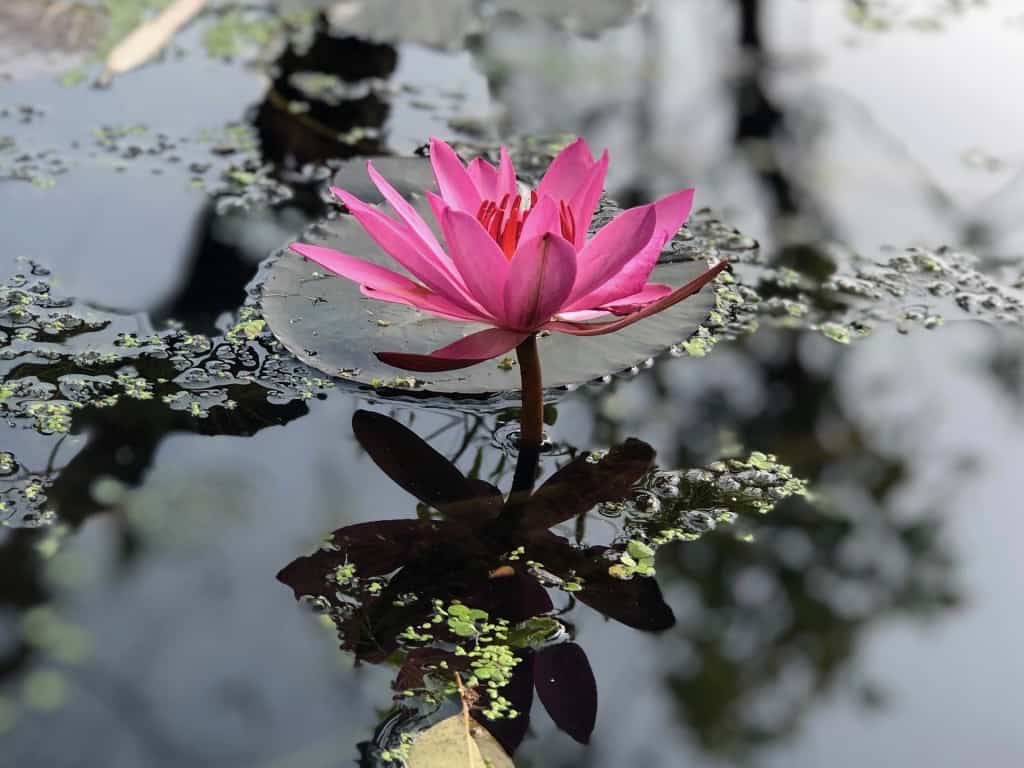
Odysseus, the ancient Greek hero, landed on the island of the Lotus-eaters during his adventurous ten-year return journey back to Ithaka after the end of the Trojan War.
You can find out more by watching some of the films in 33 movies based on The Odyssey.
Another great movie to watch is Percy Jackson and the Lightning Thief (2010). In this excellent film, Lotus-eaters are within a modern-day Las Vegas casino.
6. Venus’ Looking Glass – Bellflower or Campanula
Everyone remembers the tragedy of Narcissus falling in love with his own reflection.
Not many know about the ancient Greek myth of Venus and her magic mirror.
It also involves someone being enchanted by their own reflection, though on this occasion, the outcome doesn’t seem to be as bad as what was suffered by Narcissus.
One day Venus misplaced her magic mirror, and somehow a shepherd boy found it.
Venus attempted to retrieve it by getting Eros (Cupid) to search for it.
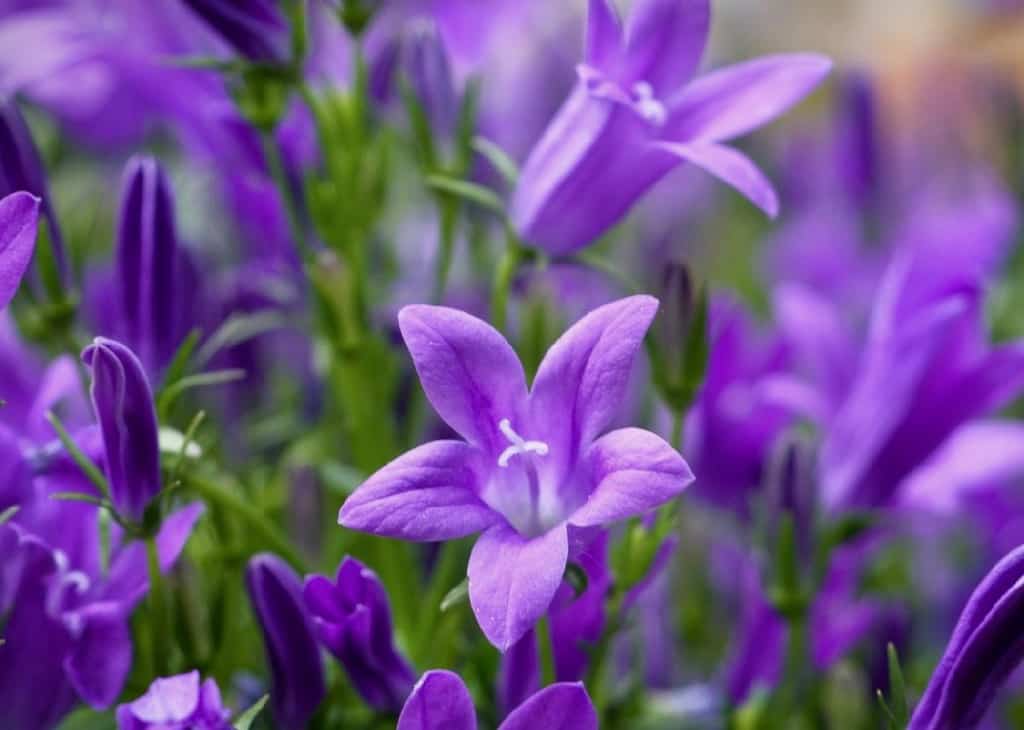
Eros eventually found the enchanted mirror, but the problem was that the shepherd boy refused to give it back after becoming enamored by his own reflection.
As Eros tried to take it away from the boy, the mirror fell to the ground and shattered.
Incredibly, bellflowers then bloomed from the shattered pieces of the broken mirror which landed on the ground.
7. Anemone
These beautiful spring flowers take their name from Anemoi, the ancient Greek Gods of the four winds.
The four wind Gods were the children of Aeolus, the Keeper of the Winds.
They included Boreas (North wind), Notus (South wind), Zephyrus (West wind), and Eurus (East wind).
The name of this flower, Anemone (meaning: “windflower”), came about since wind carries their seed.
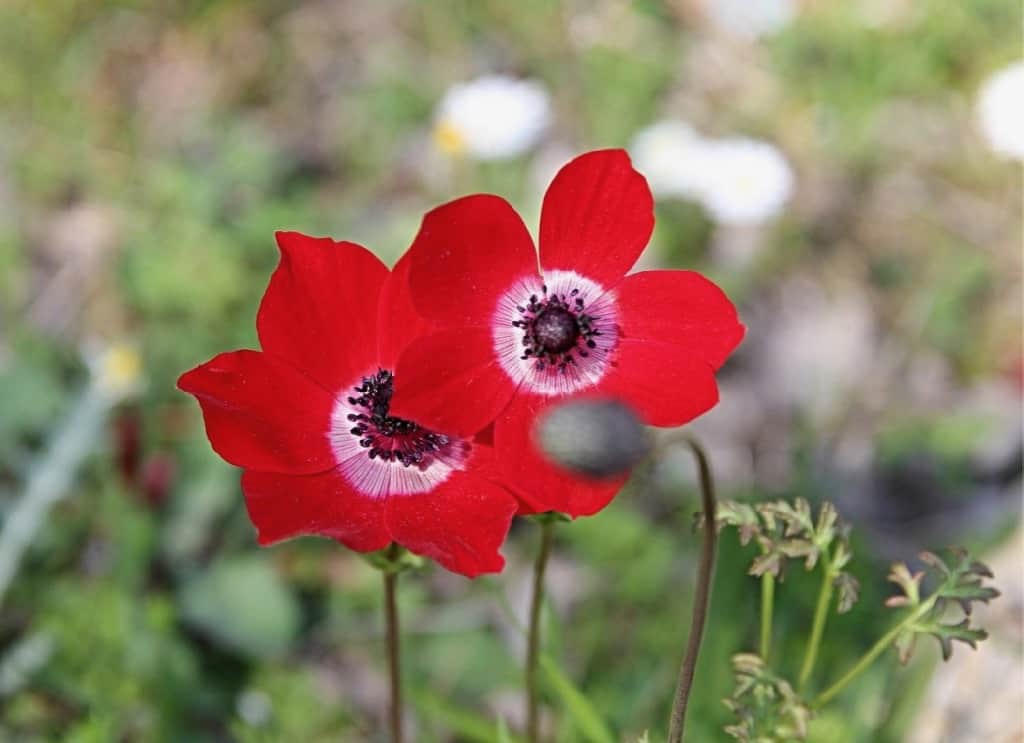
Aphrodite, the Goddess of love, initiated the creation of the beautiful red anemone flowers in remembrance of her handsome young lover, Adonis.
One day Adonis was hit by a wild boar and badly wounded while out hunting.
Aphrodite heard her lover’s painful cry and quickly arrived to find out what was happening.
Adonis was bleeding badly and died not long after, which made Aphrodite weep with sadness.
As the blood of Adonis gushed to the ground it mixed with Aphrodite’s tears, which caused red anemone flowers to spring from the earth for the very first time.
In another version, white anemone flowers transformed into red ones after Adonis’s blood-stained them red.
8. Adonis
Yellow Pheasant’s eye.
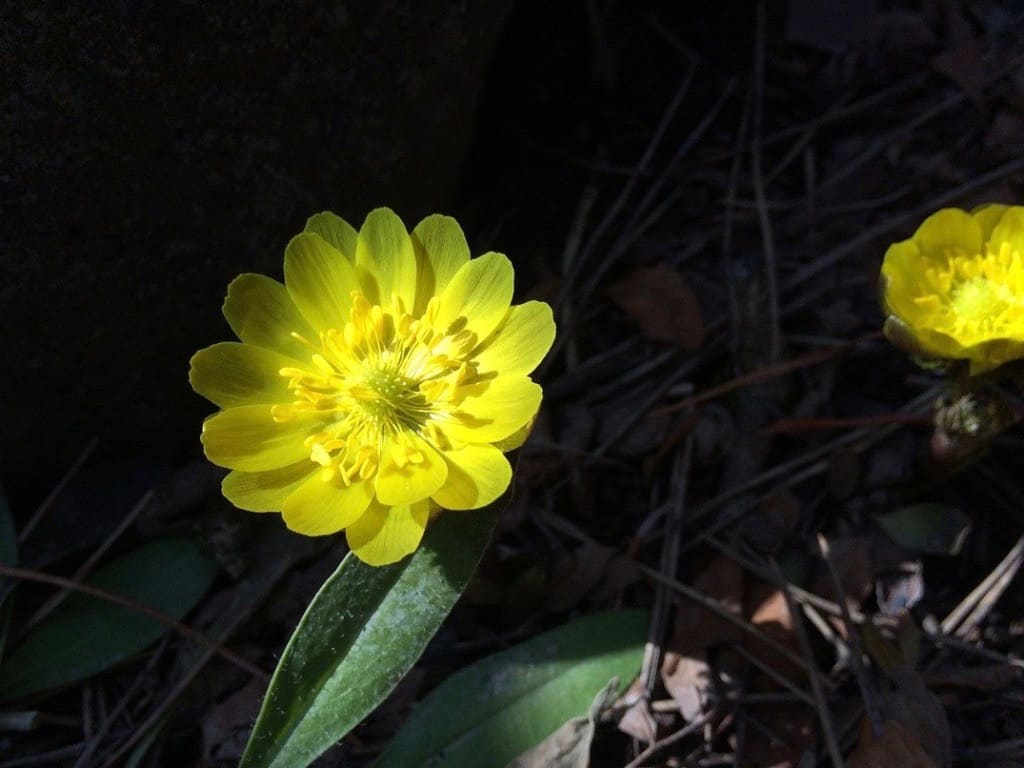
9. Daphne
Daphnes are associated with Greek mythology by name only.

Most people interested in Greek mythology already know that Apollo pursued Daphne.
However, Daphne wasn’t interested in Apollo – which seems CRAZY!
More crazy is that her father, the river god Peneus, turned Daphne into a Laurel tree to escape from Apollo.
10. Sunflower (or Heliotrope)
The sunflower is associated with Helios, God of the sun. However, Helios lost out to Apollo, so it is probably better to associate the sunflower with Apollo these days.

You can read about the myth of the sunflower in Apollo Powers: God of Light and Music.
If there is one flower that proves there must be a Greek God out there, then this one would have to prove it. Look at it!
11. Violet
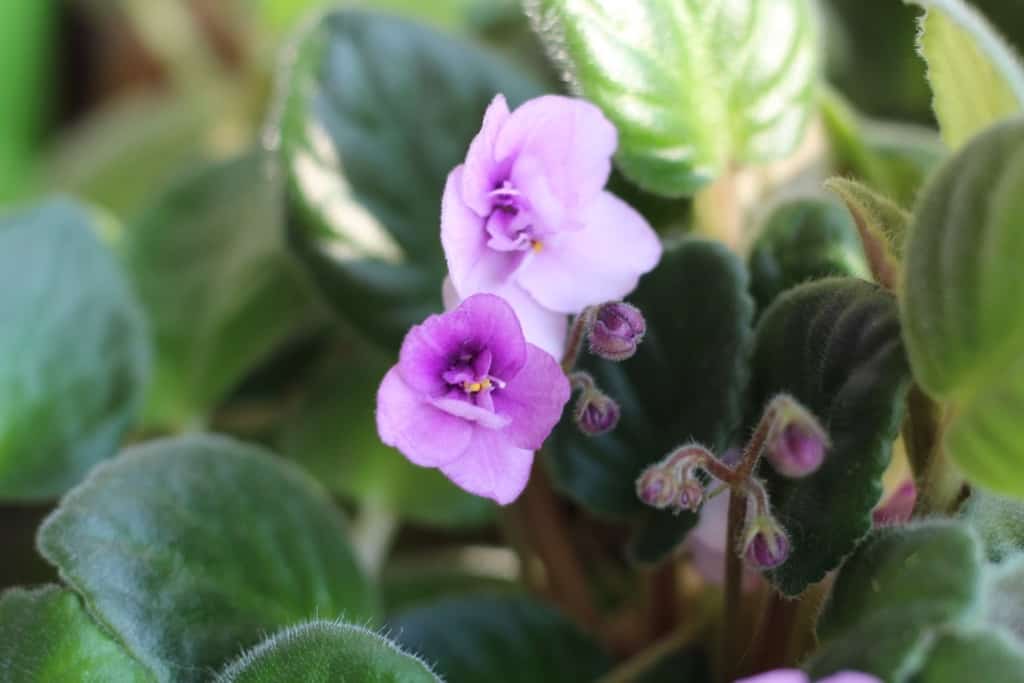
12. Orchid
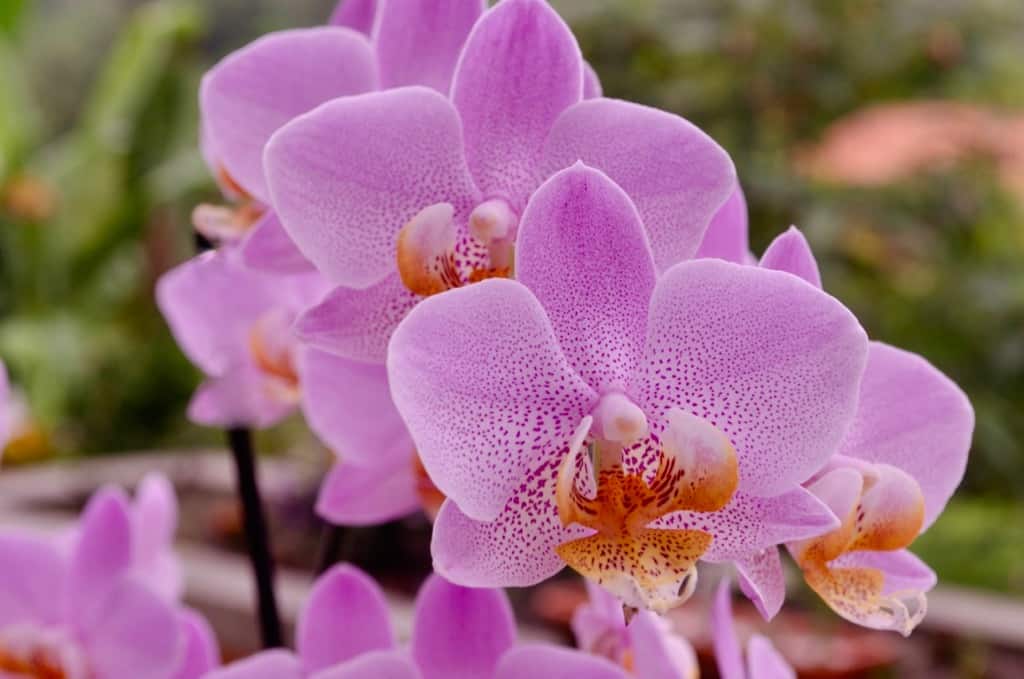
13. Red Poppy Flowers

14. Lilac

15. Lily
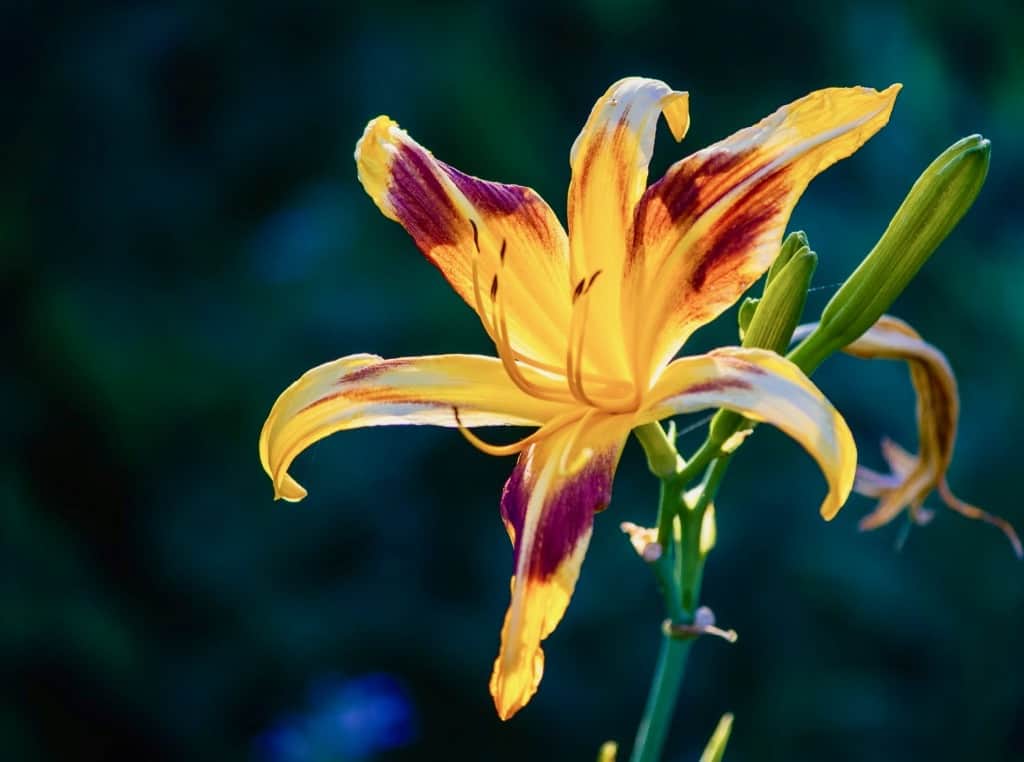
16. Chrysanthemums
The name comes from the Greek prefix “Chrys-” meaning golden and “-anthemion,” meaning flower.
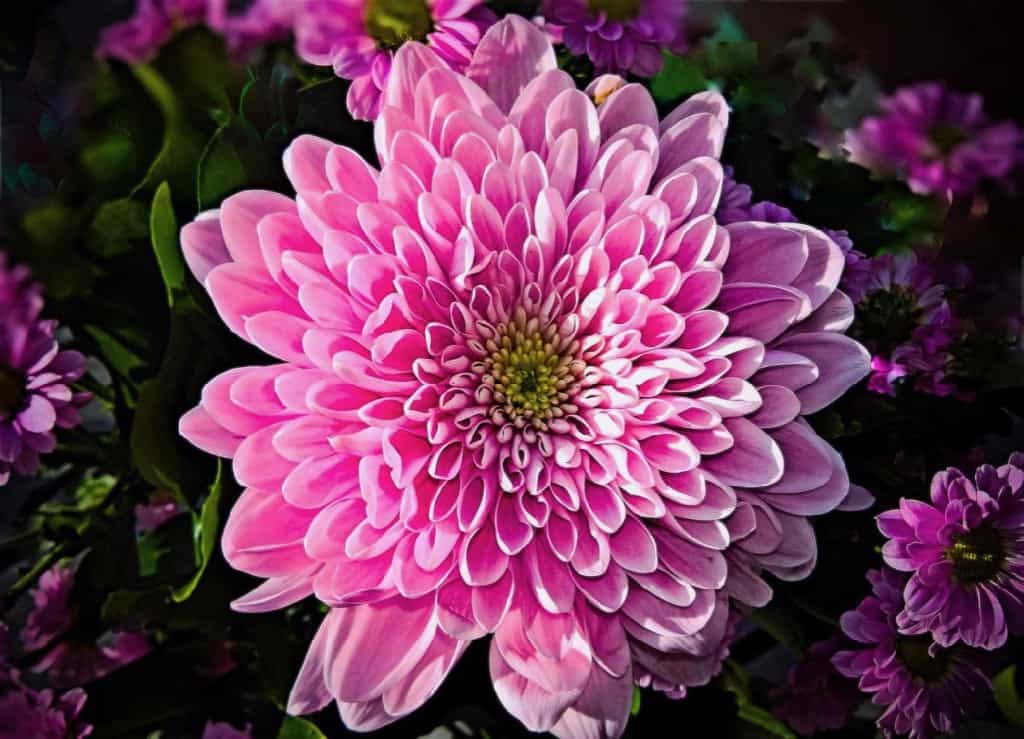
17. Peony
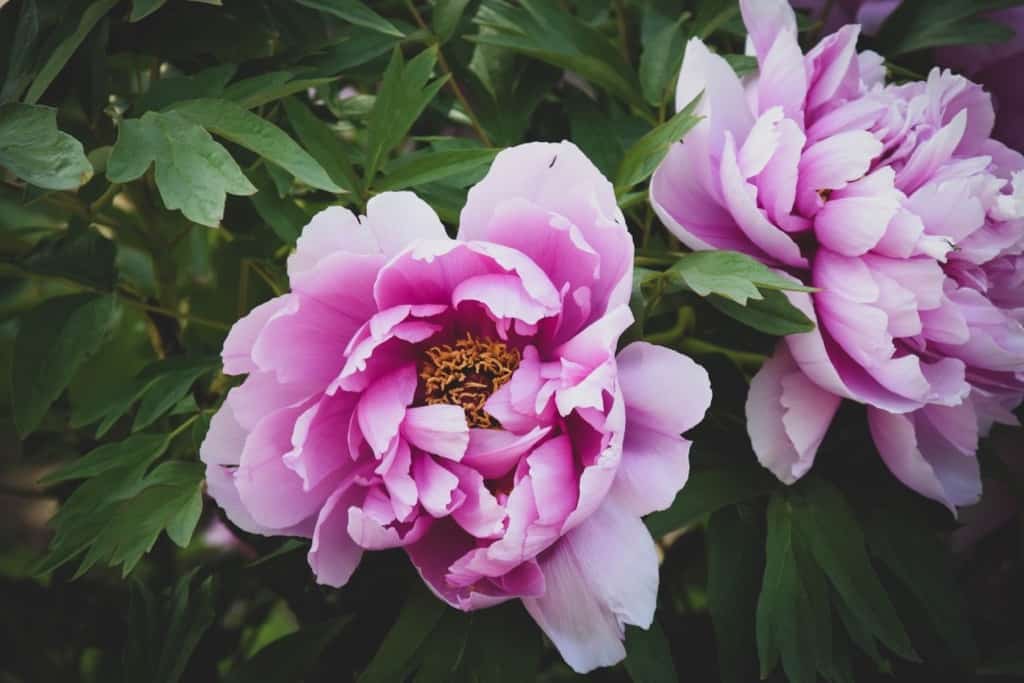
18. Protea
Here is a King Protea.
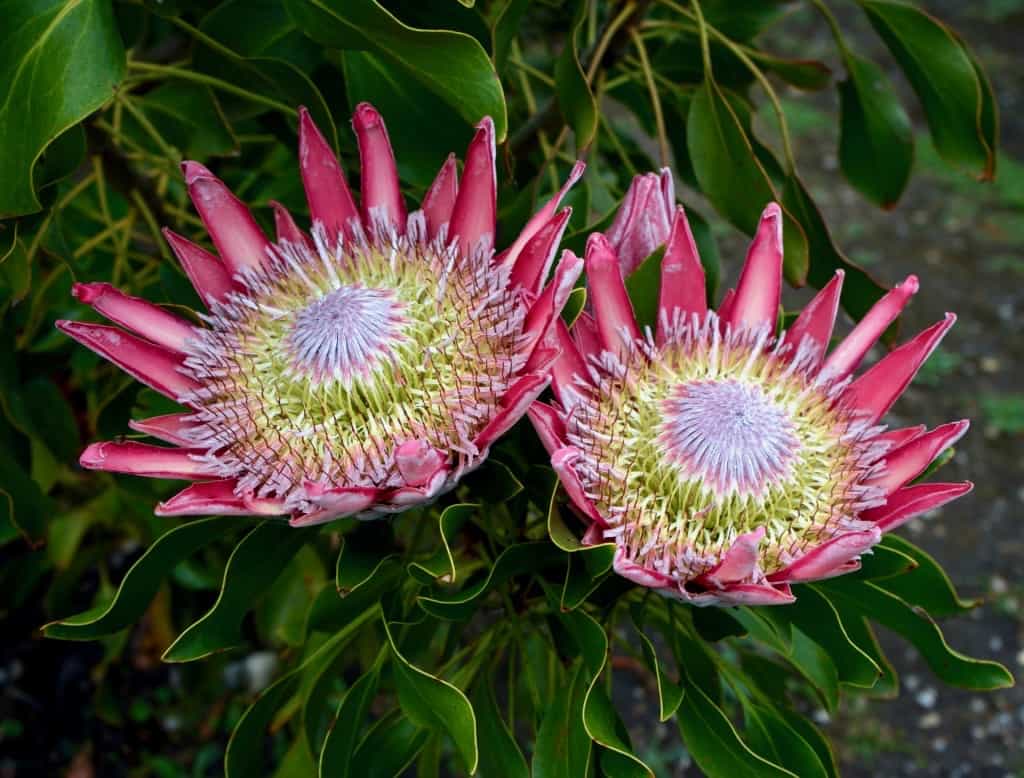
19. Hyacinth

20. Heliotrope
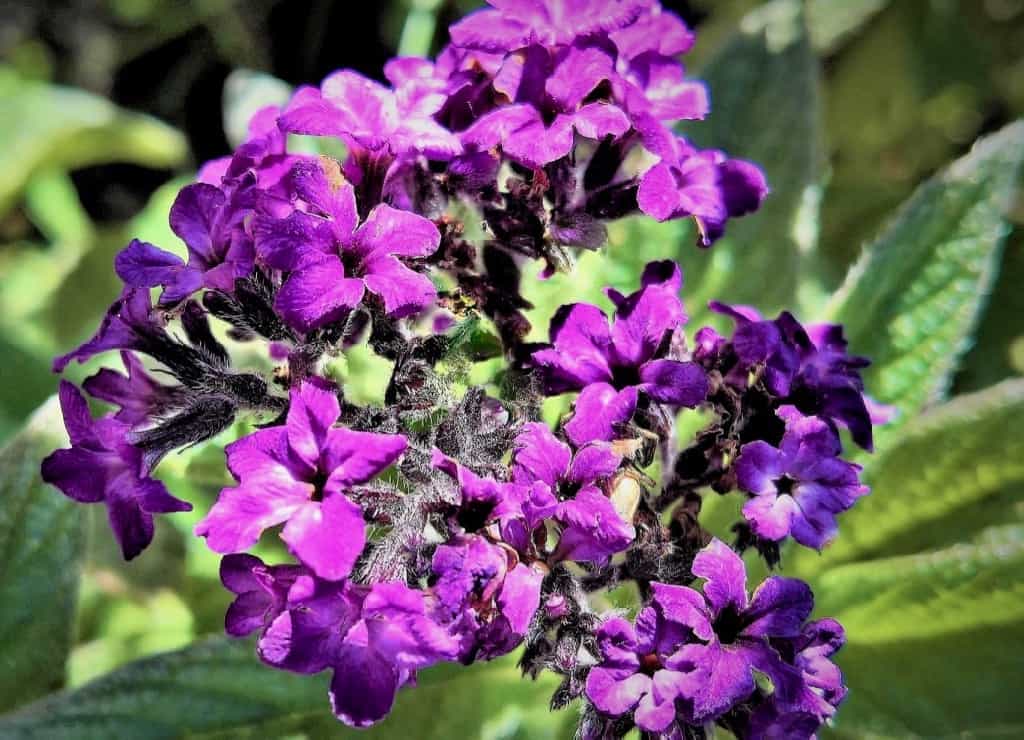
21. Aster
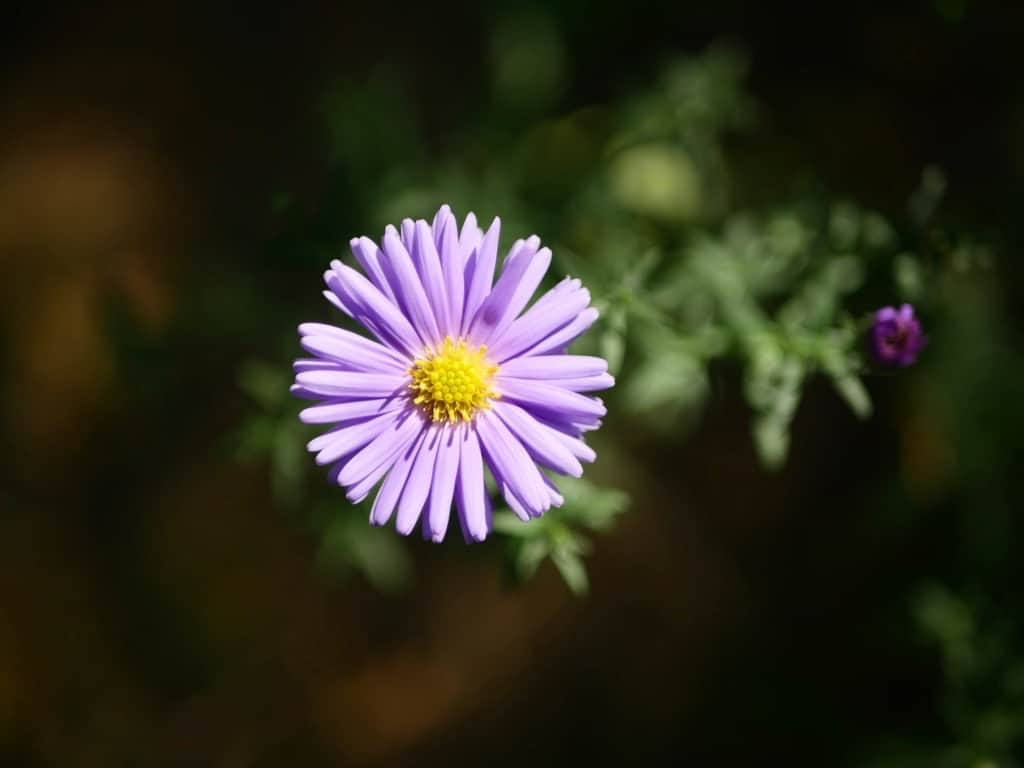
22. Yarrow (Achillea)
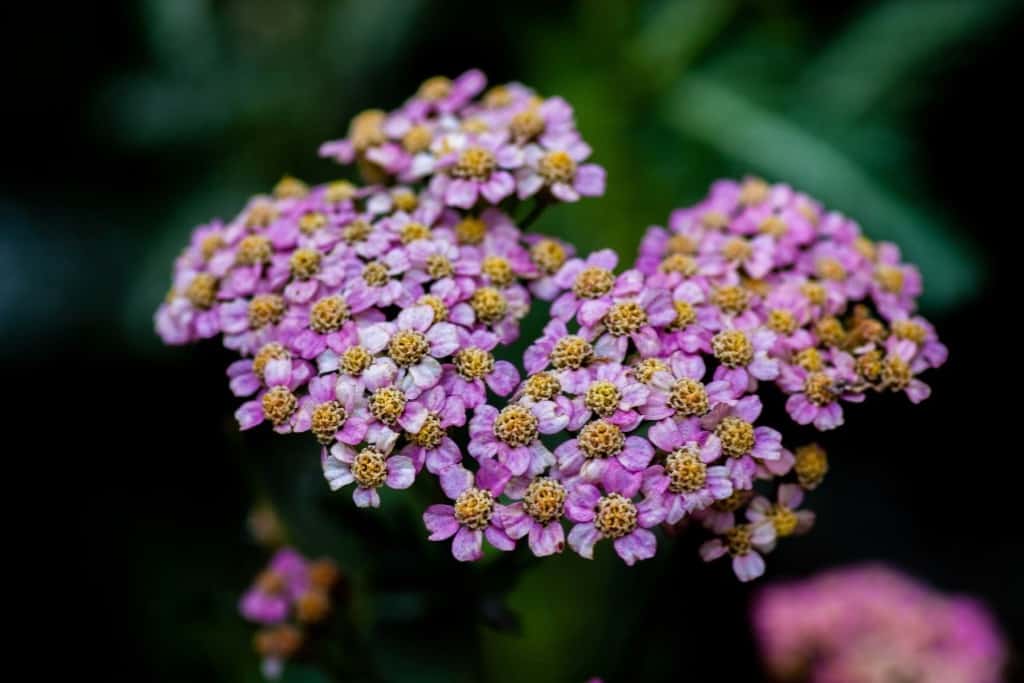
23. Cistus – Rock Rose
At some point in ancient times, Poseidon seduced Medusa. It happened in a garden of rock roses that grew on the floor at one of Athena’s temples.
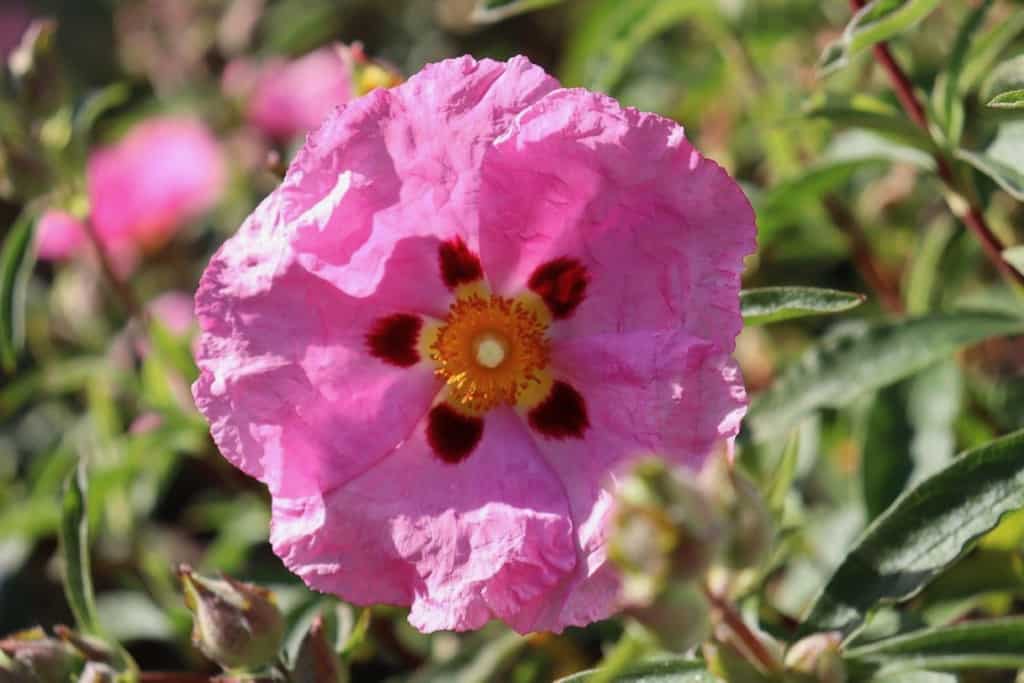
Believe it or not, Medusa, the snake-haired Gorgon, once possessed great beauty.
But that all changed when Athena decided to punish her for the act of sacrilege inside Athena’s temple.
Today, the rock rose can be considered a cruel reminder of Athena’s extreme punishment toward Medusa.
24. Amaryllis
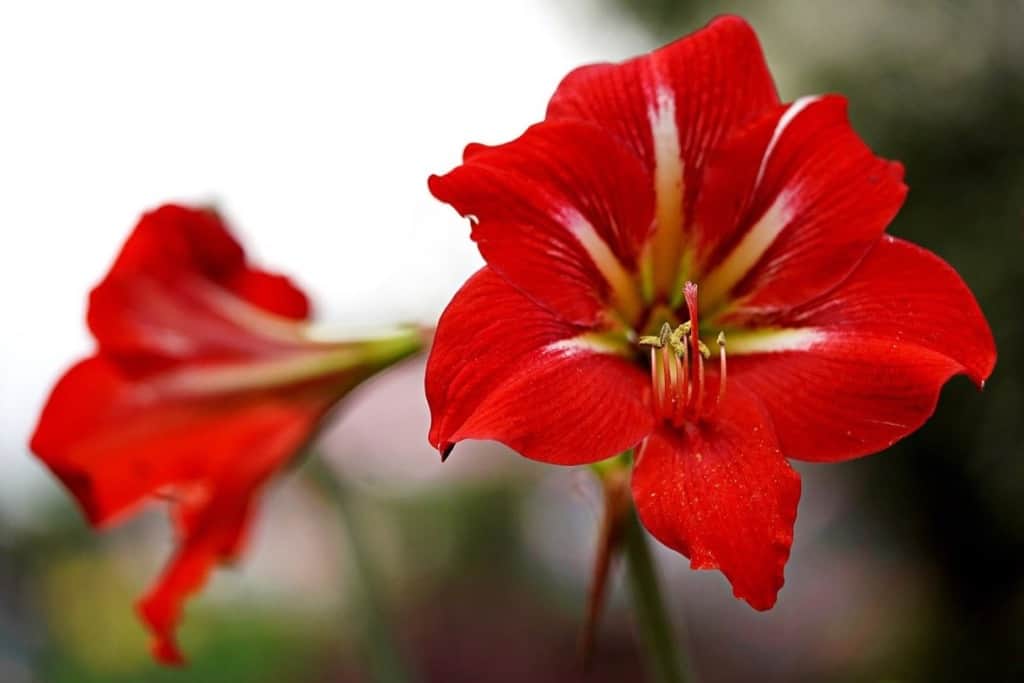
25. Aconite – Wolf’s bane
Aconite is associated with Cerberus, the three-headed dog who guarded the entrance of Hades.
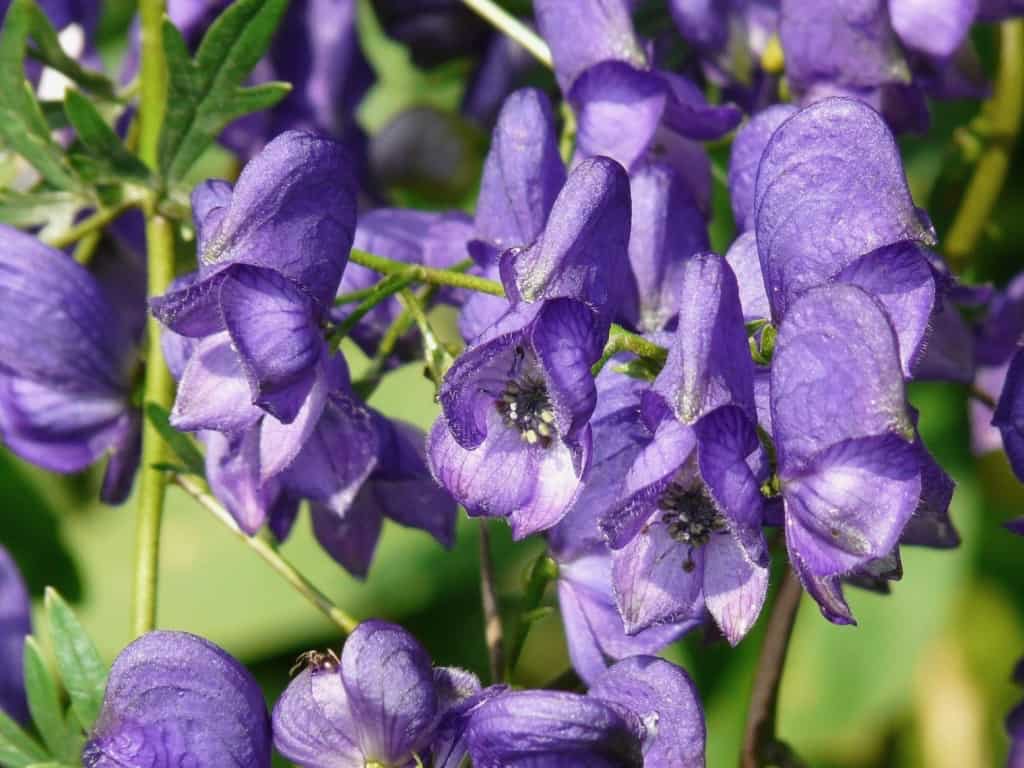
26. Centaurea
Centaurea Cyanus
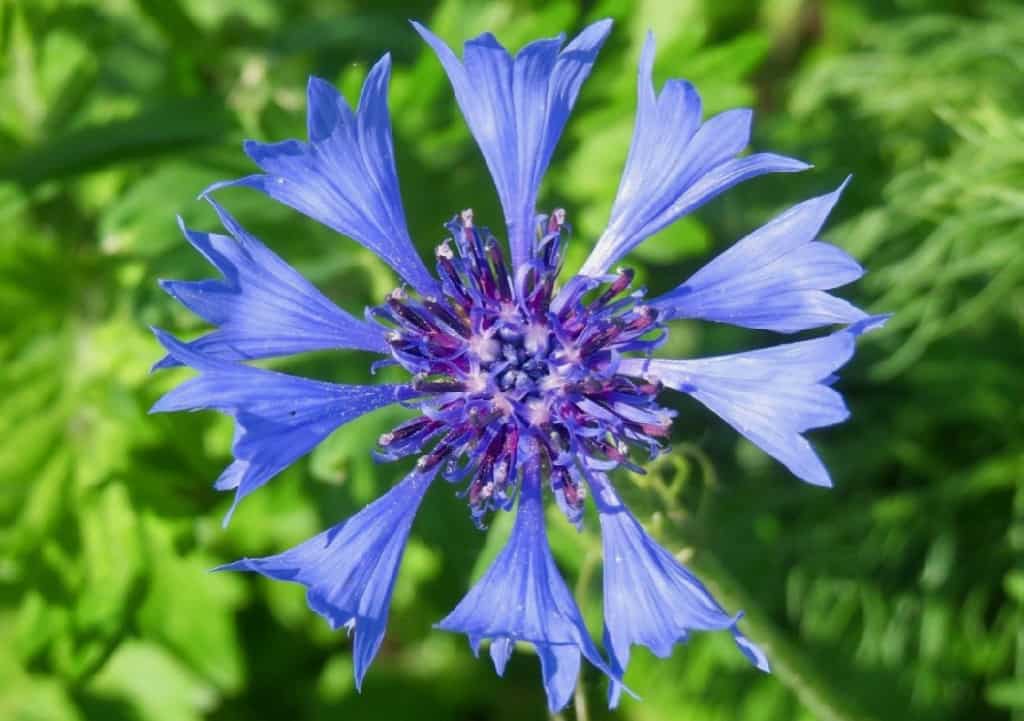
27. Crocus
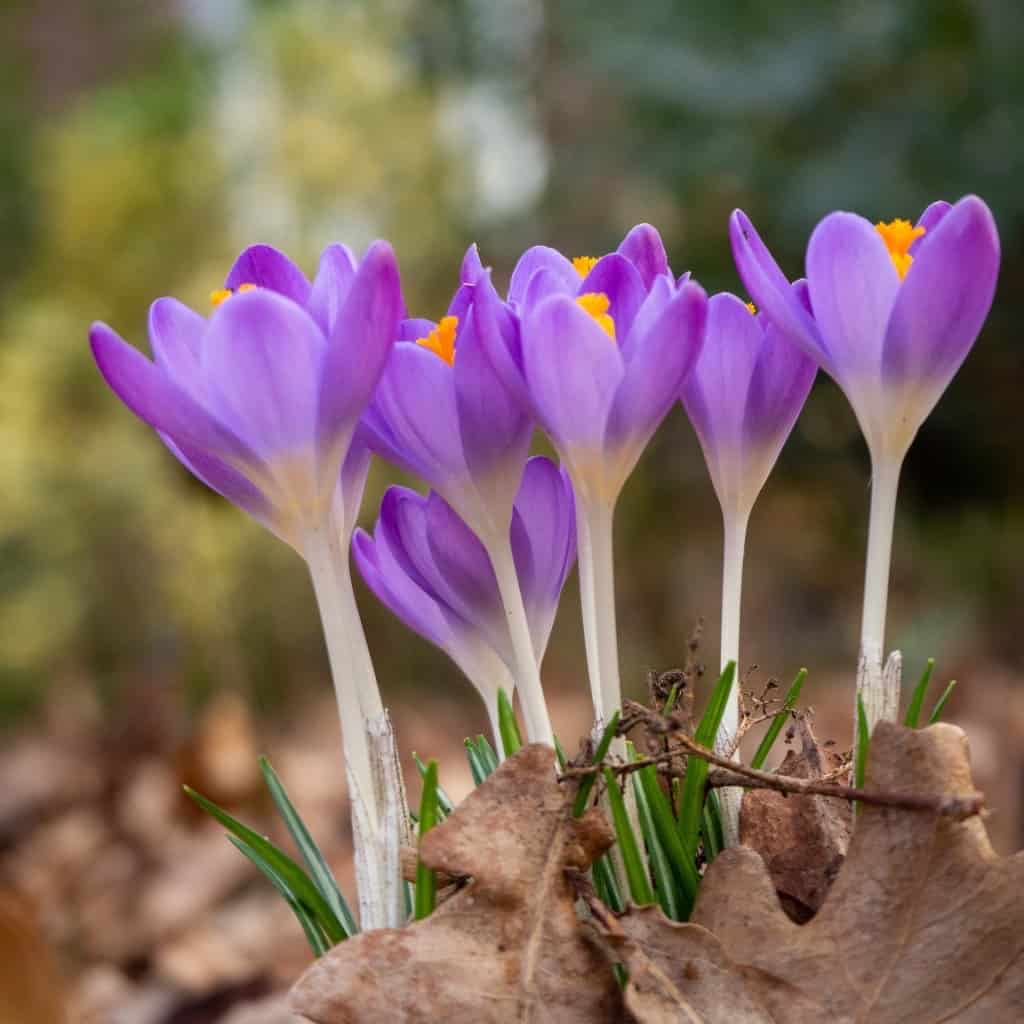
28. Delphinium or Larkspur (common name)
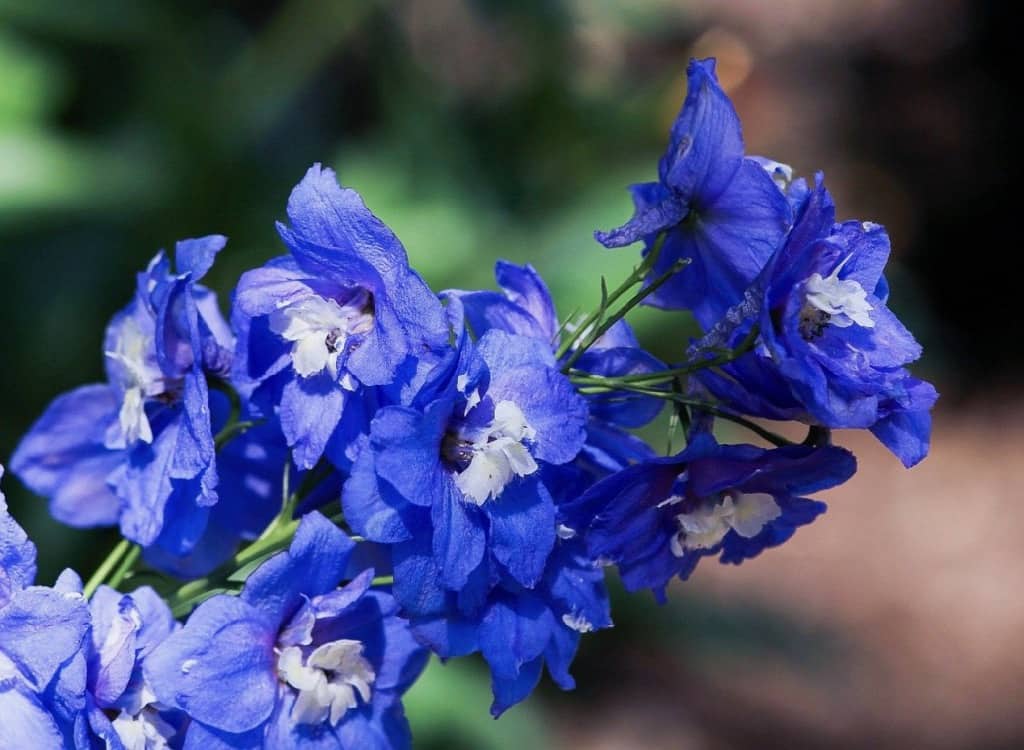
29. Althaea
The Marshmallow Plant

30. Hellebore or Christmas Rose
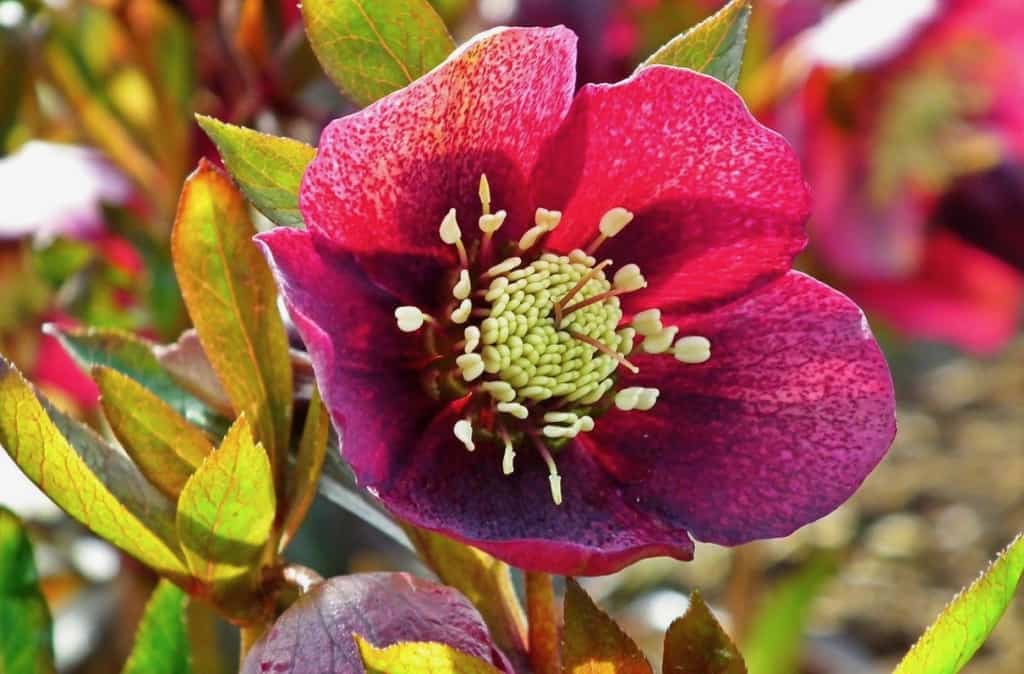
Flowers and Greek Mythology
So there you have it, 30 Ancient Greek Flowers and how Greek Mythology explains them.
I still have some explaining to do, so please be patient.
All of these ancient Greek Flowers are beautiful. Which one is your favorite flower?
Pin it … Share it
